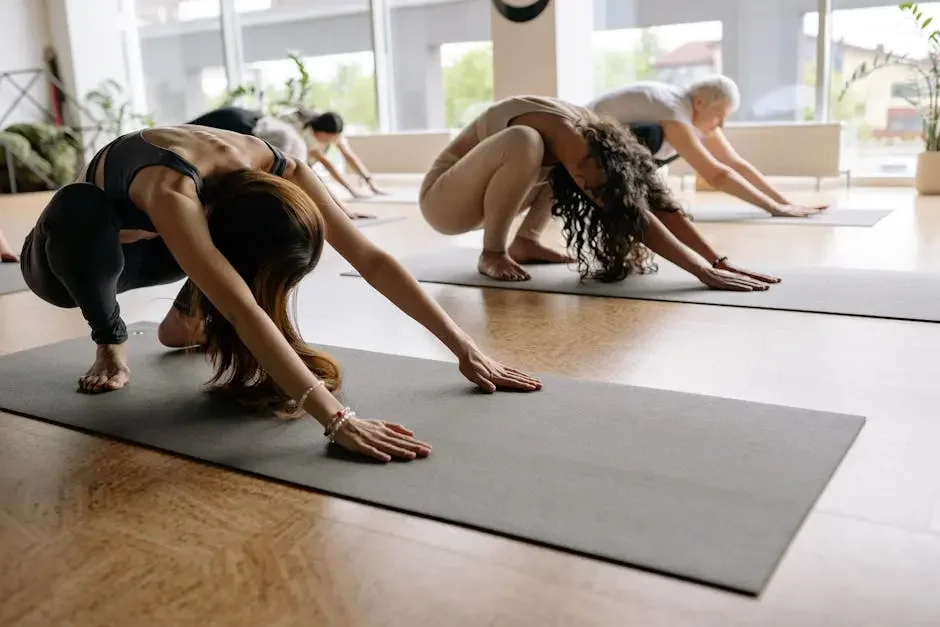How Can I Improve My Yoga Posture to Avoid Injury?
Improving your yoga posture is crucial to enjoying the practice while minimizing the risk of injury. Whether you’re a beginner or a seasoned practitioner, being mindful of your alignment can make a significant difference. In this blog, we'll explore essential steps to enhance your yoga posture and keep your body safe and healthy.
Step 1: Understand Basic Alignment Principles
Begin by learning the fundamental alignment principles of common yoga poses. This includes understanding the correct positioning of your knees, hips, shoulders, and spine.
Proper alignment isn't just about looking good; it's about protecting your joints and muscles. Familiarizing yourself with how each body part should align during various poses offers a solid foundation for your practice.
For instance, in Downward Facing Dog, your hands should firmly press into the mat while your heels reach toward the ground. This alignment allows for an even distribution of weight which can prevent undue stress on your back.
Additionally, understanding the principle of stacking is crucial. This means aligning your joints in a way that creates a straight line. For example, your knees should stack over your ankles in a standing pose to support your weight safely.
Keep in mind that learning these alignment principles takes time and practice. Consider using a mirror, taking photos, or watching video demonstrations to refine your understanding of how to achieve the right posture.
Step 2: Practice Mindful Breathing
Incorporate mindful breathing techniques into your practice. This helps you stay aware of your body and encourages proper alignment as you move through poses.
Breath awareness allows you to connect your breath with your movements. When you inhale, visualize creating space in your body, and when you exhale, release any tension. This awareness helps you maintain steadiness and focus.
For instance, many practitioners find that synchronizing their breath with their flow— inhaling during upward movements and exhaling during downward transitions— enhances both the experience and the effectiveness of the poses.
Moreover, practicing breath regulation can also guide your body into deeper stretches. If you notice tightness in a particular area, focus your breath there, which can help you relax and deepen your posture without fear of injury.
Step 3: Use Props for Support
Don't hesitate to use yoga props like blocks, straps, or bolsters to assist in your practice. They can help you achieve better alignment and prevent strain.
Using blocks, for instance, can bring the ground closer to you, making poses like Triangle or Half Moon more accessible. This is especially beneficial if flexibility isn't your strong suit yet.
Straps come in handy for poses requiring a greater range of motion. In Seated Forward Bend, a strap can provide the support you need, enabling you to keep your spine straight as you lengthen your body.
Remember, props are not a sign of weakness; they are tools that enhance your practice. Embracing them allows you to focus on alignment rather than overextending yourself and risking injury.
Step 4: Seek Guidance from a Qualified Instructor
Taking classes with a qualified yoga instructor can offer personalized feedback on your posture. They can help you identify areas for improvement and provide modifications as needed.
A good instructor will not only correct misalignments but also educate you on the rationale behind the adjustments. Understanding why a particular alignment is important can greatly enhance your ability to carry that knowledge into your practice.
Being open to adjustments can transform your practice. Trust the instructor’s feedback, even if it means stepping out of your comfort zone. After all, growth often happens when we challenge ourselves.
If you're practicing at home, consider streaming online classes led by experienced instructors. They often offer variations for different skill levels and emphasize safe practices that ensure your yoga remains injury-free.
Step 5: Listen to Your Body
Always pay attention to your body's signals. If something feels off, don’t push through the discomfort. Modifying poses or taking breaks is vital to prevent injury.
The wisdom of your body is a powerful guide. If a pose feels uncomfortable, it's your body's way of communicating that something is not right. Whether it’s a stretch that feels too intense or a tweak in your lower back, heed these signals.
Consider adopting a two-way communication approach with your body. Check in frequently during your practice: Is your breath steady? Are your muscles tense? Being responsive to these questions can deepen your awareness and refine your technique.
Ultimately, yoga is a personal journey. Treat it as such and customize your practice to fit your needs, which is key to safely improving your yoga posture over time.
Wrap-Up
By following these steps, you'll be on your way to improving your yoga posture and maintaining a safe practice. Remember, consistency is key, and always listen to your body. With a little patience and dedication, you'll see improvements that lead to a more enjoyable yoga experience.


